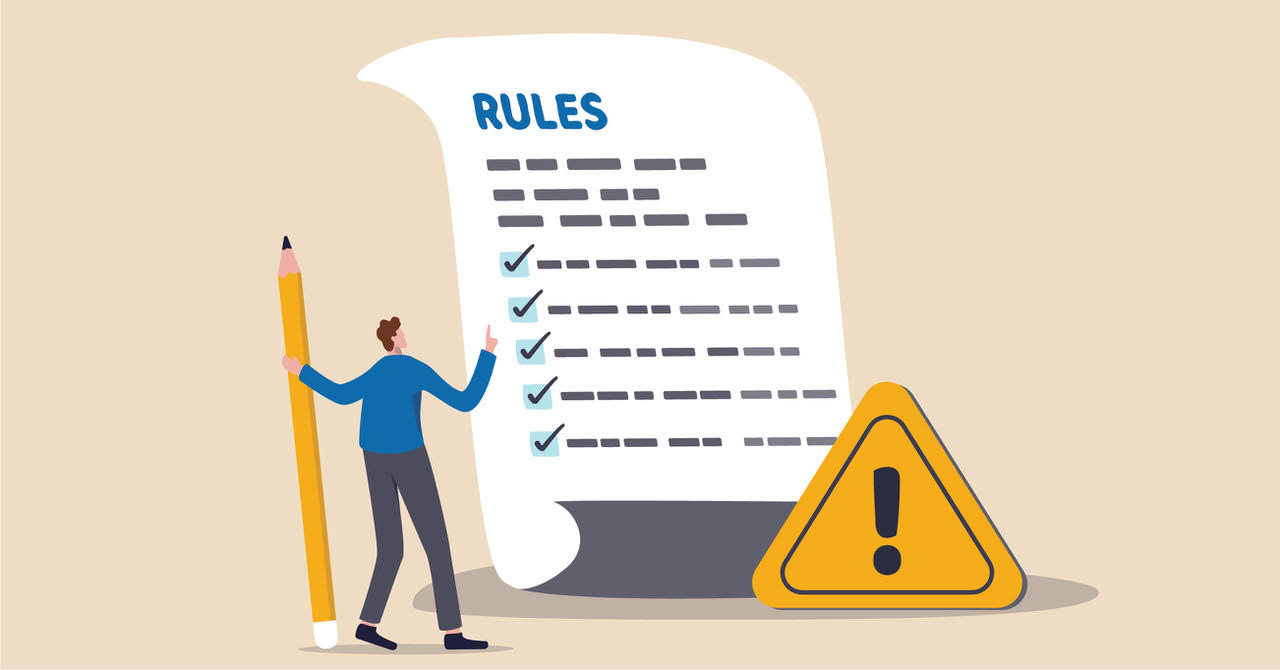Ever been in an online community where someone prattles on about an unrelated topic or attacks another member who shared a different opinion? And what about those posts that are thinly veiled (or completely unveiled) promotions for a member’s products or services?
When those things happen, the community’s intent changes, prompting you to visit it less frequently. You may pop in from time to time to see if it’s back to staying on topic and operating without volatility. But if you don’t see any changes, you move on, never to return.
As a content entrepreneur, that behavior is understandable but troubling. You don’t want to see people moving out of your neighborhood. How do you cultivate a community that stays on topic and where fellow members treat each other respectfully?
You build a framework for a well-moderated community. And that starts with guidelines – the do’s and don’ts of community member behavior.
Creating a successful online #community starts with guidelines – the do's and don'ts of community member behavior, says @AnnGynn. #CreatorEconomy Share on XCommunity guidelines not only inform the new members about how they are to act but it sets expectations about the type of community they’re entering. And it is the latter that is perhaps most beneficial – prospective community members want to know they’ll be part of productive conversations and be safe from attacks.
Set the tone for your community
Before you delve into the nitty-gritty of each rule, determine what tone you want to set for your community culture. (That’s what Mark Hicks (aka MarkBuildsIt) shares with The Tilt Discord community that he’s working on.) Knowing where you intend for the community to go helps you set the rules to head it in that direction.
Determine the tone you want to set for your online community culture, advises creator @MarkBuildsIt. #ContentEntrepreneur #CreatorEconomy Share on XGround your ground rules
Create a vision for the ideal community behavior. Briefly explain the reason for your community. (If you need help crafting the sentence or two, visit your content mission statement.) By grounding your guidelines with an explanation of why, people will be more receptive to the do’s and don’ts.
Use your content mission statement to help you detail the vision for your ideal online community behavior, says @AnnGynn. #ContentBusiness Share on XWrite down all the possible rules, then cut most of them
Detail every rule to cover every possible behavior or action you do or don’t want. If you already have an audience, ask for their input – learn what type of community they would want to join and how they would want that community to behave.
Now pare that list to a handful of rules that you’ll actually publish. First, delete every potential rule that would apply to a limited few and would have little impact on the overall community. As the community creator, you can deal with those one-off occurrences on a case-by-case basis.
Then, look for commonalities among the remaining potential rules. Use those themes to create several broad rules that cover many on your list. These five community guidelines from the National Geographic Society cover a lot of territory:
- Be civil. The Society encourages open and candid discussions and debates. However, all communications should be respectful. Differences of opinion are okay; personal attacks are not. Comments or content that are violent, threatening, abusive, sexually explicit, obscene, offensive, hateful, derogatory, defamatory, or are racially, ethnically, or otherwise objectionable content will be removed.
- Stay on topic. Comments, questions and contributions should be relevant to the topic being discussed. Keep in mind that this is not a place for unsolicited personal or commercial solicitation or advertising (e.g., “Win a free laptop,” etc.).
- Don’t upload or post inappropriate content. If a user uploads inappropriate, pornographic or offensive, or otherwise objectionable content to the Sites, such user may be banned from the Community. Society may also edit or entirely remove such posts from any of the Services it controls.
- No spam. No one likes seeing the same message posted to one or many articles, galleries or discussions.
- Observe copyright and trademark law. The posting of copyrighted videos, photos, articles or other material beyond what is protected as fair use is prohibited, and Society may remove such posts from any of the Sites it controls. Do not pass off someone else’s trademark as your own.
I like how these guidelines are written. The bolded first sentence hits on the acceptable (or unacceptable) behavior, followed by a more detailed explanation.
@NatGeo has well-written community guidelines. Be civil. Stay on topic. Don't upload inappropriate content. No spam. Observe copyright and trademark law. They also detail what each means. #CreatorEconomy Share on XIt may be helpful to include a penalty section in the guidelines. Specify what happens when people don’t follow the rules. Do members get a warning for a first offense? Are there some violations that merit immediate banning? What happens for repeated violators? (Again, make this as simple as possible.)
Post the guidelines in an easily accessible place in your community. Also, make sure to include a way for community members to report concerning behavior by a fellow member.
Enforce the rules
In The Tilt Discord conversation about community, Brian Piper says: “I’ve been in several communities that have guidelines stated that aren’t strictly enforced. It only takes a few instances for users to notice and either leave the community or stop engaging.”
It takes only a few instances of community guidelines not being enforced for users to leave or stop engaging, says @BrianWPiper. #ContentEntrepreneur Share on XYes, your guidelines are worthless unless you ensure they’re followed.
It can be helpful to address the violation directly with the community member at first. Then, if that person doesn’t edit, remove, or apologize for their misstep, you can take public actions to do it for them.
Caveat: If you remove content (or a member) that violates the guidelines, tell your community you did it but do not repeat the offender’s name or detail the content in that explanation. All they need to know is that you’re enforcing the rules.
In some cases, the community will police itself. For example, if someone promotes a product (and that’s against the rules), other community members will let them know that it’s not allowed or report the violation directly to you.
As your community grows, you also can appoint trustworthy members to become moderators. Give them the authority to address rule violations within the group and the controls to rectify them digitally if necessary.
Guide your community
The power of community is great. However, that power can quickly be lost if the members encounter irrelevant conversations, personal attacks, spammers, and more. Publicly shared – and enforced – community guidelines can prevent that from happening.
Join your fellow content creators and entrepreneurs in The Tilt Discord community. And join us in person at CEX: Creator Economy Expo in Phoenix.
About the author
Ann regularly combines words and strategy for B2B, B2C, and nonprofits, continuing to live up to her high school nickname, Editor Ann. An IABC Communicator of the Year and founder of G Force Communication, Ann coaches and trains professionals in all things content. Connect with her on LinkedIn and Twitter.



![Use Creator Coins (aka Social Tokens) to Grow a Community Invested in Your Content [Examples]](https://www.thetilt.com/wp-content/uploads/2021/09/Coins-2-440x264.jpeg)






